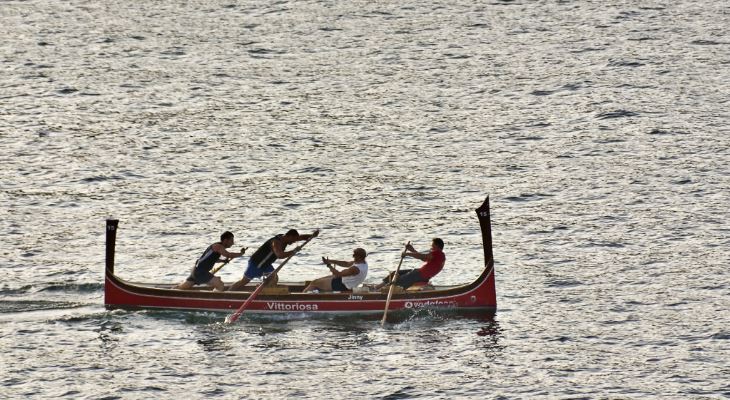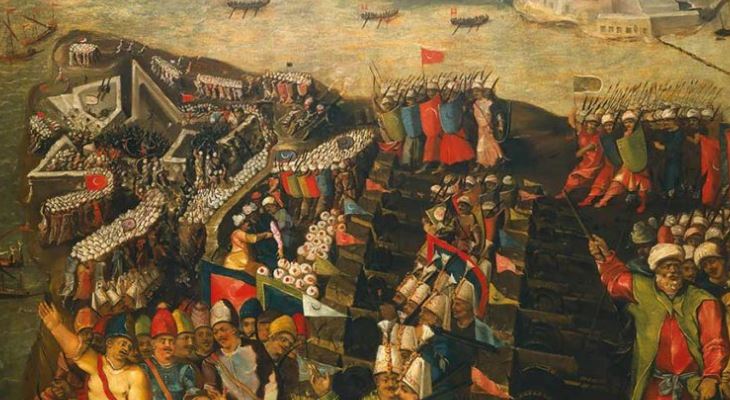Parades, performances and boat races: but what does Malta’s Victory Day actually signify?
The 8th September aims to recount stories of triumph.
“Today we celebrate our Victory Day!” Ok, so this quote from the American film Independence Day actually refers to the American holiday, but, that’s just nit-picking, right?
The 8th September in Malta, otherwise known as Victory Day, can be compared to the stars and stripes' holiday in that it promotes unity and nationhood, celebrated through the supposed recollection of historical events. In Malta, it commemorates the end of the Great Siege in 1565, the rebellion against the French in 1800 and the end of the Siege of Malta during World War II. It is also known for the traditions which take place, such as army parades and performances in the capital, the regatta (boat race) in the Grand Harbour, as well as the laying of symbolic garlands.

Clive Vella / viewingmalta
These mark the myths of Malta’s identity. It gives the everyman and woman a reason to take some time off work (though this year’s holiday falls on a Saturday - boo!), to drink and make merry. Even its name – Victory Day – gives it a sense of purpose, a sense of triumph over evil. The demons have been fought and won. But what are the stories it tells?
1. The end of the Great Siege – 1565

Matteo Perez d’Aleccio, (c. 16th Cent.) The Siege of Malta (1565) — The capture of St Elmo. Oil on canvas. National Maritime Museum, Greenwich, London, Caird Collection.
If there is one historical event which has shaped the Maltese mind it is the Great Siege - the attack, by the Ottoman Empire, on the small island-state under the rule of the Knights of St John - one of the bloodiest battles in a Europe which was still seeing red. The Turkish Armada sailed to the island on 18th May 1565, and what ensued has been the subject of legend ever since: decapitated corpses on mock crucifixes floating across the Grand Harbour, boiling oil poured over invaders scaling the fortified walls of the three cities and valiant heroism shown by every soldier, peasant, woman and child. And, months after the onslaught commenced, on 8th September, the Ottomans, struck by desperation in the face of excessive losses, retreated from the besieged towns of Birgu and Senglea, the heart of the battle.
2. The rebellion against the French – 1800
For most of its history, Malta was in someone else’s possession. In 1798, it was the turn of the French who, led by Napoleon, took over from the Knights of St John. But when the new rulers started to dismantle the institutions and property of the church, the religious Maltese population – with a militia of thousands of men - rose up and pushed the French garrison into Valletta, where they remained for the next two years. In September 1800, the French gave in and signed a surrender, giving the island over to the British, making it part of its empire until independence in 1964.
3. The end of the Siege of Malta during World War II – 1943
Known as the second Great Siege, the attacks on Malta during World War II were relentless. Axis fighter planes would swoop in, dropping bombs which punctured the limestone land. Children could hear the whistle as the bombs fell down; families hid in their shelters; by 1942 the island was on the brink of starvation. Even after the arrival of the Santa Marija Convoy, the bombardment did not subside. But, on 8th September 1943, Italy withdrew from the war, pulling their planes and ending the blitz on the island.
Whether these three events definitively shaped Maltese society and identity is questionable. But they are stories told every year; stories which allow us to eschew the complexities of the present, allowing us to focus for a brief moment on the past.
What to expect:
1. Parade by the Armed Forces of Malta in the capital, in the morning;
2. Commemorative events at Fort St Angelo: admission price will be €2 with mass being celebrated at 10am; a commemoration of the Great Siege victims at 11am and another Mass at noon;
3. The regatta (rowing boat race): in the Grand Harbour, in the afternoon;
4. Village feasts celebrating Our Lady as a Child (Maria Bambina/Our Lady of Victory) in Senglea, Naxxar, Mellieha and Xaghra in Gozo.